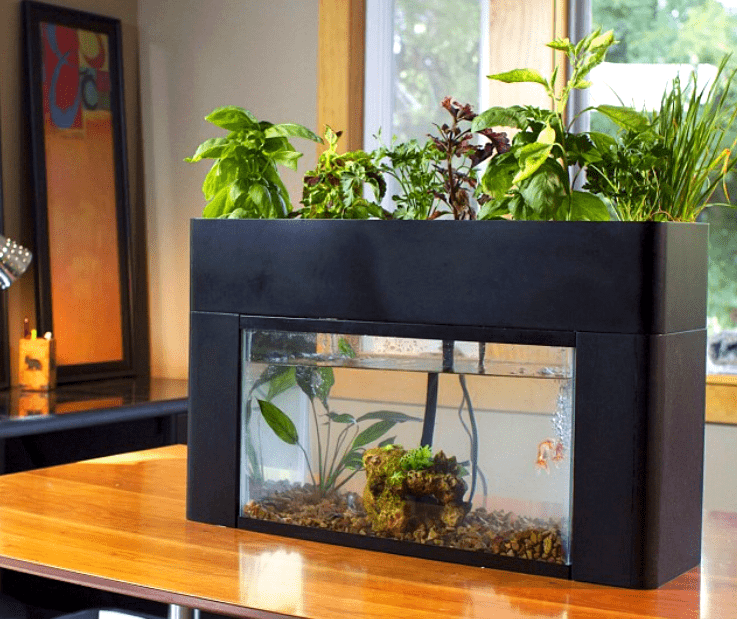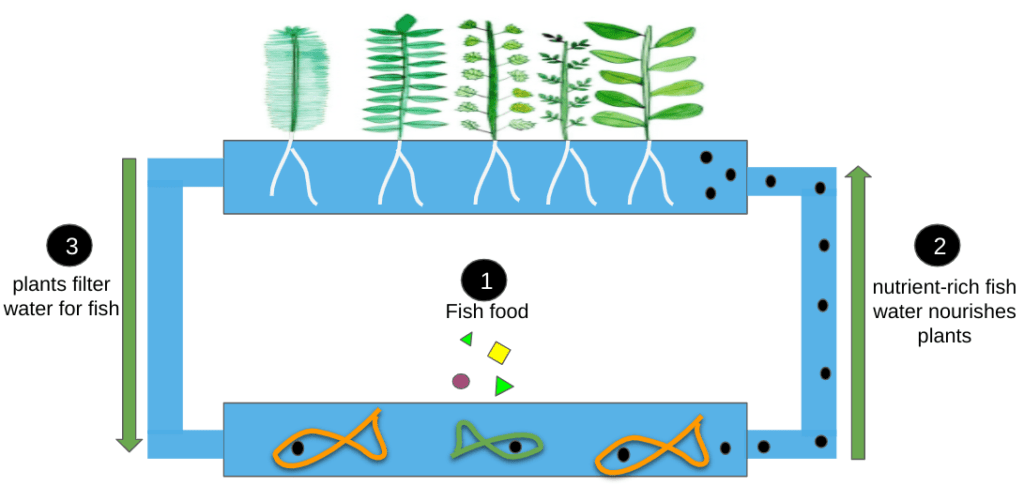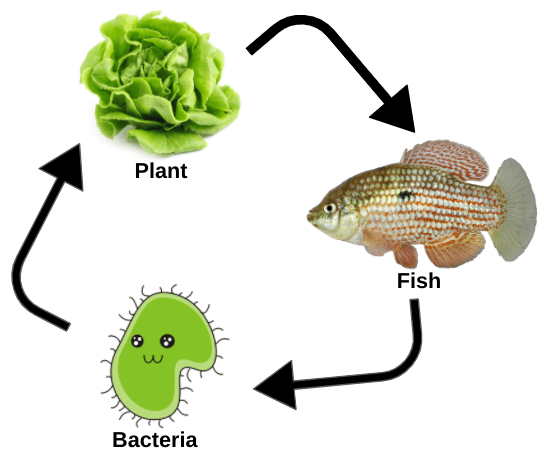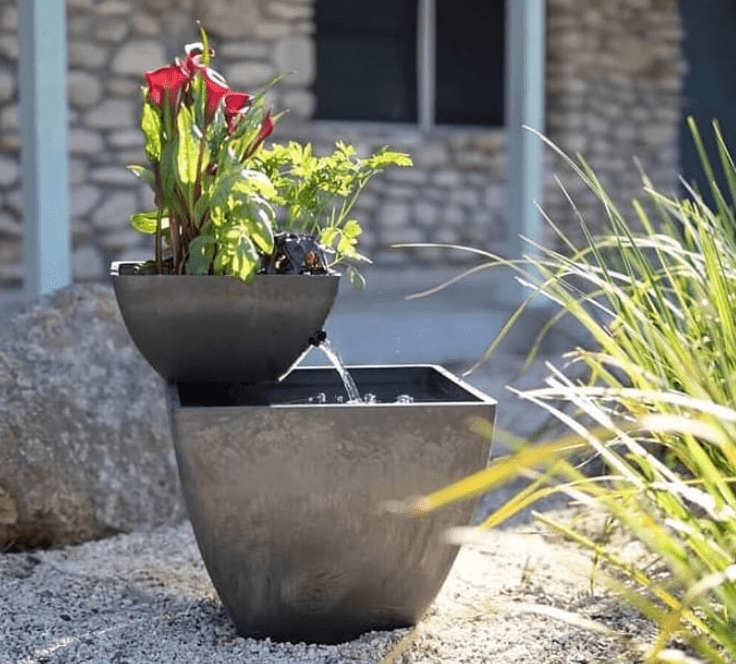AQUAPONICS – A SYMBIOSIS SYSTEM WHERE EVERYTHING IS TRANSFORMED AND NOTHING IS LOST

What is aquaponics?
Aquaponics is a combination of hydroponics which is growing plants in nutrient-rich water and aquaculture which is the cultivation of aquatic organisms such as fish, algae and mollusks. In this type of aquaponics system, effluents from aquaculture are not released into the environment but are redirected to the roots of the plants and constitutes a perfect fertilizer for growing plants. Therefore, the nutrients supplied to plants come from a sustainable, productive and non-chemical source. In the other hand, the plants purify the water for the fish. So, Aquaponics is actually a win-win system.
In short, in this system, the waste produced by the fish is recycled by the bacteria that converts it into a perfect fertilizer for the plants, to return the water in a clean and safe form to the fish.
Do you want to try this at home? Lets discover in this article all the tips you need to begin domestic aquaponics system!
What do I need?

Most of the material needed is easy to find at a very low price.
- Seeds
- Fishes (One kilogram of fish supports the cultivation of seven kilograms of plants)
- Aquaponics fish tank
- Aquaponics plants tank
- An aquarium pump (it must pump at least twice the volume of water in the system every hour)
- A few meters of classic garden hose to circulate the water between the different tanks
How does it work?
the waste (Ammonia) produced by the fish feeds the plants, and the plants clean the water for the fish, producing one continuous cycle. This Ammonia is transformed into Nitrate by Bacteria and absorbed by plants. Then when Nitrate is used by plants, water becomes clean and safe for fish.
The three main organisms of aquaponics systems

Obviously, for the proper functioning of this system, you must respect some rules:
- Choose the flattest and heaviest site possible.
- Put the fish, in spring or in autumn because the extreme periods are not suitable.
- Fish are very sensitive to temperature changes. Be sure not to cause a thermal shock on the fish when they are first immersed in the tanks. Start small to familiarize yourself with the system
- Monitor the pH and temperature required by each species. The ideal temperature is between 18 °C and 30 °C and the pH between 6 and 7
- Don’t overfeed the fish
- Control equipment regularly
What can I grow?
The Aquaponics system includes the growing of many species such as plants and some aquatic organisms like fish. For that, you have just to have enough fish and the appropriate equipment for each culture.
Aquaponics plants
Firstly, you can cultivate leafy plants and herbs that grow rapidly in aquaponics systems:
- Lettuce
- Basil
- Oregano
- Thyme
- Mint
- Kale
- Mustard green
- Dill
- Watercress
- Stevia
Also, some vegetables are also very adaptable to aqua growing but only if you have a heavily stocked aquaponics tank and well established set up as well as additional nutrient additives during fruiting periods:
- Tomatoes
- Beans
- Cauliflower
- Peppers
- Cucumber
- Eggplant
- Strawberries
- Squash
In short, everything grows in aquaponics, even trees so you just need to create the optimal conditions (tanks sizes, enough nutrients, enough fish, optimal pH and temperature).

Aquaponics fish
There are a number of different fish that work well in an aquaponics set up:
If your purpose is to eat and feed your family, you can grow:
- Yellow perch
- Tilapia
- Koi
- Catfish
- Carp
- Trout
For ornamental purposes, you can choose:
- guppies
- tetras
- mollies
- Goldfish
- Algae
To create your own aquaponics system you need time and more concentration, but if you master this system on a small scale you can easily create a large aquaponics urban farm and thus participate in the protection of the environment, the creation of new job opportunities and the production of healthy food.
Did you find this helpful? Share it with your friends!